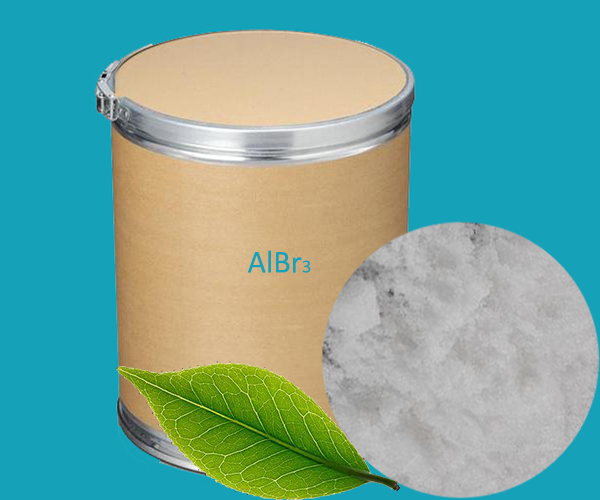Aluminium bromide (AlBr3) is an inorganic compound composed of aluminum and bromine. It is a typical metal halide, colorless or yellowish solid at room temperature, with strong hygroscopicity, which can quickly absorb moisture in the air and deliquescent. Aluminium bromide easily reacts with water vapor in the air to form hydrobromic acid and alumina, so it needs to be sealed during storage and use.
1. Catalyst: Aluminum bromide is an effective Lewis acid catalyst that is widely used in organic synthesis, especially in the polymerization of olefins. It can be used as part of a Ziegler-Natta catalyst system for the production of polyolefins such as polyethylene and polypropylene.
2. Chemical intermediates: Aluminum bromide is used in the production of other aluminum compounds, such as aluminum hydroxide and alumina, which have a wide range of applications in fields such as ceramics, abrasives, and catalysts.
3. Thermal reducing agent: In the metallurgical industry, aluminum bromide can be used as a thermal reducing agent in the production process of refining certain metals, especially titanium and zirconium.
4. Petrochemical: Aluminum bromide is used as a catalyst in the petrochemical industry for cracking, isomerization, alkylation, and other conversion processes to improve the yield and quality of gasoline and other petroleum products.
5. Drug synthesis: In medicinal chemistry, aluminum bromide can be used as a catalyst or reaction aid for the synthesis of various pharmaceutical intermediates and active pharmaceutical ingredients.
6. Analytical chemistry: Aluminum bromide can be used as a titrant in analytical chemistry for the determination of basic functional groups in certain organic compounds.
7. Ionic liquids: Aluminium bromide can be combined with other organic cations to form ionic liquids that have potential applications in fields such as electrochemistry, catalysis, and solvents.
 English
English Español
Español Português
Português Français
Français Deutsch
Deutsch Русский
Русский 中文
中文 日本語
日本語
